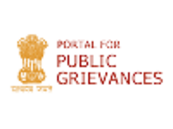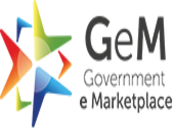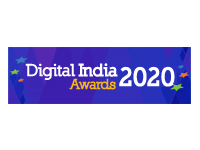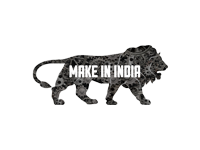The first ever Indo-Japan bilateral programme on Information Technology was organized in the form of two Workshops, held in New Delhi and Bangalore. The New Delhi Workshop was held at the seminar hall of the Videsh Sanchar Nigam Ltd. (VSNL) on 20 August, 1996 and the Bangalore Workshop was held on 23 August, 1996 at the Super Computer Education and Research Centre (SERC), Indian Institute of Science (I1Sc), under the sponsorship of National Information System for Science & Technology (NISSAT), Department of Scientific and Industrial Rescarch (DSIR). The Institute of Social Analysis and Communication (ISAC), New Delhi was given the responsibility of organizing the Workshops. More than 65 information professionals including representatives of information industry, Indian S&T information services and information users participated in each workshop.
NEW DELHI WORKSHOP
The New Delhi Workshop started with a brief Inaugural Session which provided the right context for the theme of discussions that was to follow. Opening this session, Dr. Abhijit Lahiri, Adviser, DSIR mentioned in brief the genesis of the Workshops. He drew attention to the growing importance of Japanese information in India. To make available such information easily, it was necessary to initiate meaningful dialogue between the information providers of the two countries. The workshops could surely provide a beginning of such a dialogue.
Mr. Raj K. Gupta, Director (Developnient), VSNL welcomed the participants and expressed his happiness on VSNL being chosen as the venue of this important Workshop. The VSNL, he explained, was providing the essential international communication links in India. It would surely like to be a willing partner in the dissemination of scientific and technical information between India and other countries.
Mr. Sumio Horiuchi, Vice-President, Japan Information Center of Science and Technology (JICST), drew the attention of the audience to the growing importance of the Asia-Pacific region in the global scenario and hence increasing information activities in the region. There is now a greater need to forge links within the region with global information networks, especially for working on global issues, such as environmental progranunes. JICST has been working towards this goal by disseminating information to many agencies in a number of countries. Mr. Horiuchi also mentioned that JICST has a plan to convert itself into a corporation with enlarged activities
Dr. RA Mashelkar, Secretary, Department of Scientific and Industrial Research and Director General, Council of Scientific and Industrial Research, mentioned in brief the success story of Japan in several technological fields, which helped the country to reach the top and continue to be at the top. It was quite evident that the wealth of a country depended more on production of knowledge- based value added products and for such activities the most important input was information. Dr. Masheikar regretted that formal links in S&T collaboration did not exist between India and Japan. In this context he was happy to see the beginning of a direct dialogue between the information providers of the two countries, inspite of language barrier, in the form of the Workshop. Networking is an effective facility contributed by information technology and this facility has to be accelerated. Concurrently, networking of mind sets has to be achieved. This workshop, he believed will set the pace and prove to be a major step forward towards this end.
Mr. Seiji Kojima, Minister in the Japanese Embassy, New Delhi said that in the context of current trends in globalization, information technology is poised to play a key role. Information super highway is already a reality. For its proper utilization, we need to have many information sharing programmes. There should also be Indo-Japan joint programmes in the field of science and technology.
At the close of the Session, Dr. Lahiri proposed a vote of thanks. He mentioned about the choice of venue i.e. the VSNL where uninterrupted Internet connection was available. He thanked the authorities of the VSNL, Dr. Mashelkar for inaugurating the Workshop, Mr. Kojima and the Japanese delegation and all participants and invited guests.
The first paper of the Technical Session on Information Market Scenario in India was presented by Dr. A. Lahiri. In this paper, a view of the changing information scenario was provided since the 1970s, showing the growth of public funded information systems, growth of data networks, growth of private enterprises, transformation of the book trade, growth of private enterprises in business and commercial information, international tie-ups, role of news agencies in information business, commercialization and privatization of public funded systems, and so on.
Dr. Lahiri also threw light on Indian database ventures, Indian databases on CD-ROM, Indian online services, and efforts being made for commercialization of public supported information activities. He also suggested strategies for information market development.
Mr. Sumio Horiuchi, Executive Vice-President of JICST was the next speaker, who spoke on the Information activities in Japan with focus on the activities of JICST. He identified the four major information centres as the National Diet Library (NDL), National Centre for Science Information System (NICSIS), Japan Patent Information Centre of Science & Technology (JICST). He dwelt at some length on the current activities and services of JICST, after a brief mention of its activities since 1957. He also spoke about international cooperation and services for overseas provided by JICST. Mr. Horiuchi concluded his presentation by giving a glimpse of the future plans of JICST.
The next presentation was on Japanese S&T Information on CD-ROM by Satoshi Komatsu from the Abstracting & Indexing Department of JICST. He explained the scope, content, and coverage of two files, namely the JICST file (Japanese Language Database) and JICST - E file (English Language Database) and then explained the procedure for searching JICST-E file on CD-ROM.
Online and CD-ROM scenario in India was the topic of the next paper presented by Dr. S. Krishnan, National Chemical Laboratory, Pune. Reviewing briefly the online facilities in India, Dr. Krishnan showed that the demand for online access has been increasing over the last two to three years. The most popular hosts are Knight Ridder (DIALOG) and STN and the most popular databases are Derwent and INPADOC (for patents), COMPENDEX, INSDEC, MEDLINE and CA. The majority of online users are end users (90%).
CD-ROM databases have become a very effective alternative to online databases. A rough estimate indicate that there are around 80 unique titles in CD-ROM being subscribed to by Indian user community. The most popular title is MEDLINE followed by CAB Abstracts, AGRIS, and COMPENDEX PLUS. There are only a handful of titles that are of Indian origin. India is a young and growing market for information products.
After the presentation of the above set of papers, the remaining part of the pre-lunch session was devoted to some interaction with the participants. They sought clarification and further information, mainly from the Japanese speakers, on coverage of JICST-E file, search technique of the file, basis of selection of foreign journals at JICST, international cooperation of JICST, method of collection of technical reports, non-availability of import figures of Japan, CD-ROM pricing policy, budget of JICST, coordination of JICST with other information organizations in Japan and so on. The respective speakers provided the necessary information or clarifications on the above points.
After lunch, Mr. Mitsutosi Wada, System Development Department, JICST, presented a paper on JICST’s Information Available on the Internet. Mr. Wada described in brief the information sources available from the JICST WWW Server, including JICST services, publications, Japanese Information related to Science & Technology, Translation Network Service, etc. Under Japanese Information related to Science & Technology, one could access Institutes Directory, Resource Directory Database, Researchers Directory, JITR Directory (Japan Industry Technical Reports), Public Reports, etc.
It was indicated that the number of accesses to the JICST Server was increasing rapidly. There were more than 20,000 accesses from overseas during the month of July, 1996. 77% of these were from North America, 14% from Asia (about 50 accesses from India in 1995), and 6% from Europe.
After a short tea break, Mr. Raj K. Gupta, Director (Development) VSNL, spoke on Internet Services in India. Mr. Gupta dwelt in brief on the background and rapid development of the Internet and then threw light on the VSNL’s Gateway Internet Access Services (GIAS). GIAS would enable subscribers to log into remote databases, send E-mail, read news, download files, and range of other applications. He explained the mechanisms of some of the common uses, such as E-mail, USENET, TELNET, FTP (File Transfer Protocol), MOSAIC (a web browser). GIAS tariffs being charged by VSNL from different categories of users and different types of access were also mentioned. To give an idea of the growing popularity of the Internet, it was mentioned that the number of people using the Internet was about 50 million worldwide and is estimated to grow to 200 million by the close of the century. The presentation of Mr. Gupta was followed by a demonstration of Internet search, conducted by Mr. Niloy Ray and Mr. Piramanayagam.
Mr. Seiji Kojima, Minister in the Japanese Embassy, New Delhi speaking at the Inaugural Session.
Seen on the dias (from L to R) are: Mr. Raj K. Gupta, Director (DEV), VSNL;
Mr. Sumio Horiuchi, Vice-President, JICST; Dr. R. A. Mashelkar, Secretary, DGSIR;
Dr. A. Lahiri, Adviser, DSIR. [Photograph ]
The last two papers of the Workshop were on Machine Translation, of which the first one was presented by Ms Keiko Imai, Office of International Affairs, JICST. The paper was entitled JICST Machine Translation System (JMT). This translation system, from Japanese to English, is being used in the production of the JICST-E file mainly by translating titles and abstracts of papers. The JMT dictionary of 600,000 terms in every field of S&T and medicine. For S&T papers, the accuracy is claimed to be 80%. The use was explained with suitable examples. In 1994 JICST developed the JMT for workstations and personal computers. This has enabled individuals to use JMT in their translation work. In January 1996, JICST began the Translation Network Service on the Internet, using the workstation version. The distribution of the PC version of JMT scheduled for the coming winter.
The last paper was presented by Mr. Ashok K. Chawla, Scientist, INSDOC, on Demand of Japanese S&T Information in India: Problems and Prospects in Translation. Mr. Chawla talked about the continuous growing demand of Japanese information in India for more than last two decades and also the reasons for this. He reviewed the sources of Japanese information in India, indicated the major problems in obtaining Japanese information, translation needs and translating capacity within the country, and discussed some problems of translation. He also threw some light on the future prospects of Japanese translation in India.
The Workshop came to an end with a short concluding session when Dr. Lahiri made a brief review of the issues discussed and Prof. B. Guha, Director of the organizing agency, the Institute of Social Analysis and Communication, proposed a vote of thanks.
Bangalore workshop
The workshop was inaugurated by Dr. Sridhar Mitta, President, Wipro Infotech, Bangalore. Welcoming the participants, Prof. N. Balkrishnan informed the distinguished audience on the activities of the SERC in Indian Institute of Science. Mr. Sumio Horiuchi, Vice-President, JICST also addressed the participants. He was impressed by the facilities existing in India and would like to take up joint projects with India. Mrs. S. Ravindran proposed the vote of thanks and provided the background of the workshop and the reasons for selecting the two venues for organizing the workshop. She also mentioned that topics selected from Indian side has been given thrust in two ways. In Delhi the NISSAT-JICST workshop concentrated on the government sources of information, while in Bangalore the emphasis was on industry based information services.
The JICST team gave presentations on the same topics as that of Delhi, the Indian side presentations were made on the following topics.
Mr. N.V. Satyanarayana, Director Informatics India made a presentation on Electronic and CDROM publishing - Indian efforts. Mr. Saumil Majumdar, WIPRO R&D demonstrated a software on CDROM publishing.
Dr. T.B. Rajasekhar, Principal Research Scientist gave a detailed presentation on Internet applications at 11Sc and NCSI. He informed that NCSI a large number of public domain information sources available on Internet can be accessed from NCSI. Through the Internet Search Service (ISS), NCSI help the users in identifying, searching and extracting information from relevant Internet sources. He also informed that nominal handling charges are collected from the users to recover portion of operational costs of their services. NCST also explained the services provided by NCSI like Current Awareness Service, CDROM Database Service, Document Delivery Service, Online Search Service and Factual database services.
Dr. Narayana Murthy, Director INFOSYS gave a talk on "IT Industry in Bangalore - the focus of global attention". Dr. Murthy started with a story, how the city got the name Bangalore. He then spoke on the various aspects of the development of industry in Bangalore and its merits and demerits.
Dr. (Mrs.) Prema Parvatharajan, Scientist INSDOC presented an overview of Japan India Technology Network (JITNet). She explained the background for the establishment of JITNet. The main objective of JITNet is to provide a platform for users in India and Japan to obtain information with end objective of promoting Indo- Japanese Technology Cooperation. She also gave a detailed account of conceptual design and implementation of JITNet and other facilities. JITNet is accessible through internet and has three home pages providing information on JITNet page, Japan Page & India page.
Dr T.B. Rajashekar, on behalf of the organizers, thanked the institution, the speakers and the distinguished audience for making the meet a success.





















